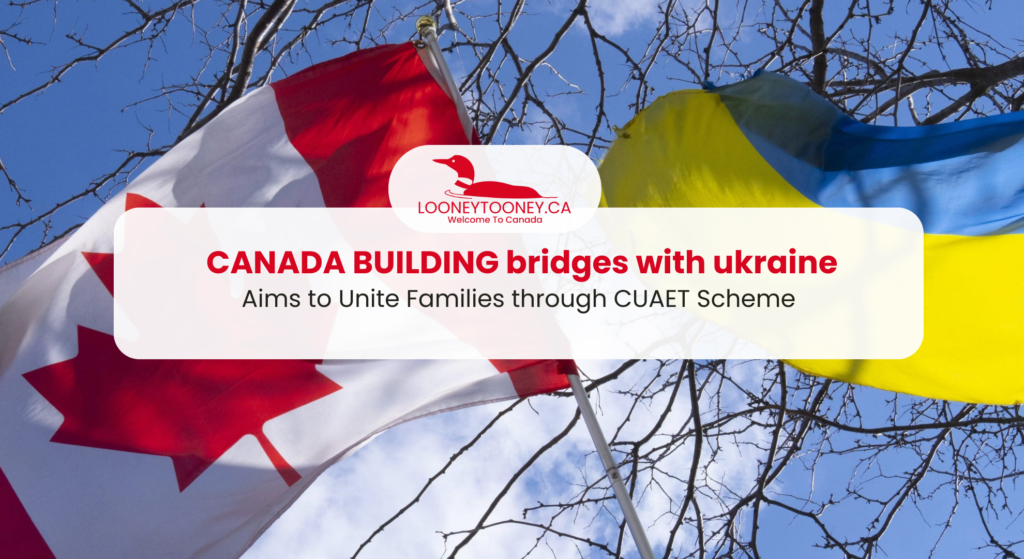Canada’s population soars to 40 million driven primarily by immigration
Canada, known for its vast landscapes, cultural diversity, and inclusive society, has experienced a remarkable surge in population over the past decade. While Canada continues to be amongst the fastest-growing countries in the world per capita, it has beaten its own records in immigration last year. According to Statistics Canada, Canada’s population was estimated at about 39.5 million as on January 1, 2023, after a record population growth of over 1.05 million people from January 1, 2022, to January 1, 2023.
Reasons for Growth in the Canadian Population
This is the first time in the history of Canadian immigration that the number of immigrants coming in a 12-month period has exceeded 1 million. It is incidentally also the highest-ever growth rate (+2.7%) on record since that seen for 1957 (+3.3%). The reasons for the increase in 1957 are very different from the increase in 2022. In 1957, a high number of births within Canada due to the post-war boom and high immigration from Hungary due to a revolution there were the key causes.
In 2022, the reason behind Canada’s record-high population growth is international immigration which almost exclusively (over 95%) accounts for the record growth. Canada is by far leading the G7 countries for population growth in 2022, as has been the case for many years. This rate of growth implies that we could double our population in about 26 years.
The increase seen in international migration is due to the efforts of the Government of Canada to ease labor shortages in the economy. Job vacancies are still high and the employment rate is quite high. The government has taken various steps to increase the number of permanent as well as temporary migrants.
Province-wise population growth in 2022
While we see the growth rate of the entire country, it is easy to miss the salient features of individual provinces and territories. Some regions are, surprisingly, growing at a much faster pace than the rest of the country. Key points to note are listed below:
- Maritime provinces grow at a much faster rate than the rest of Canada: The provinces of Prince Edward Island, Nova Scotia, and New Brunswick have added to their population at a phenomenal rate of 4.25%, 3.53%, and 3.28% respectively. While their population base is smaller as compared to larger provinces, the high % population growth in a year is sure to put a huge upward pressure on housing demand and other provincial services like healthcare.
- Alberta sees a higher growth than other large provinces: The growth rate of Alberta at 3.68% beats the larger provinces of Ontario (2.98%) and Quebec (1.74%) by a large margin. The growth in Alberta can perhaps be attributed to its much higher affordability of housing and lower tax rates of income tax as well as sales tax. The province is going all out to attract more people from within Canada too as is evident from the eye-grabbing campaign run by former premier Jason Kenny to attract people to Calgary and Edmonton from Toronto and Vancouver.
- Quebec continues to be a laggard in immigration: Quebec is a very beautiful and culturally rich province and one would expect it to have one of the highest rates of immigration. However, the Quebec government wants to manage immigration at its own pace. The requirement of French knowledge leads to a lesser number of central express entry applicants choosing Quebec as their home province.
- Ontario remains the most preferred province for most immigrants: By the absolute number of immigrants, Ontario continues to lead the pack. A huge pool of well-settled immigrants, a larger population base, an economic powerhouse Greater Toronto Area (GTA), good universities and an openness to embrace immigrants continue to draw a disproportionate number of new immigrants to Ontario. Its population increased by almost 450,000 accounting for about 45% of the total increase in the population of Canada as a whole.
Canada’s Immigration Policy and the Road to Growth
Canada’s immigration policy has played a pivotal role in attracting and accommodating a substantial number of newcomers. The introduction of the Immigration and Refugee Protection Act in 2002 paved the way for a more inclusive and welcoming approach. Key features of the policy include family reunification, economic immigration, and refugee resettlement. Lately, there is an increased focus on economic class and younger migrants who can contribute to the Canadian economy in the longer run.
The economic immigration program, including skilled workers and entrepreneurs, has been instrumental in Canada’s population growth. The country actively seeks individuals with valuable skills, talents, and qualifications to contribute to its economy. Additionally, Canada has prioritized refugee resettlement, offering protection and a new home to those fleeing conflict and persecution. This is evident in the recently rolled out program to help people fleeing war in Ukraine
Canada as a welcoming destination
The influx of newcomers has been fueled by various factors, including Canada’s reputation as a safe and welcoming nation, strong economic opportunities, and a well-established settlement support system.
Most immigrants are settling in major urban centers such as Toronto, Vancouver, and Montreal, which boast thriving economies and diverse cultural communities. This concentration can present both benefits and challenges for these cities, including increased economic activity, cultural enrichment, and the need for infrastructure development to accommodate the growing population.
Economic Impact of Immigration
Canada’s growing population has had a positive impact on its economy. Immigrants bring new skills, knowledge, and perspectives that contribute to innovation and productivity. They fill labor market gaps, particularly in sectors experiencing shortages of skilled workers. Moreover, immigrant entrepreneurs have been instrumental in creating jobs and driving economic growth.
However, integrating a large number of newcomers into the labor market can also pose challenges. Ensuring the recognition of foreign credentials, providing language training and professional development opportunities, and addressing systemic barriers are crucial steps in maximizing the potential contributions of immigrants to the Canadian workforce.
Social and Cultural Impact of Immigration
Canada’s population growth has led to significant social and cultural transformations. The country’s multicultural fabric has been enriched by the diverse backgrounds, traditions, and perspectives of new immigrants. This cultural diversity enhances social cohesion and fosters a more inclusive society.
However, cultural integration and social cohesion require ongoing efforts from both immigrants and the host society. Promoting intercultural understanding, supporting community engagement, and addressing systemic discrimination are essential for building a harmonious and inclusive Canada.
The path ahead
While Canada’s population growth and record immigration present numerous opportunities, they also bring challenges. Managing urbanization, ensuring affordable housing, and maintaining infrastructure are critical considerations. Additionally, providing essential services, such as healthcare and education, to a growing population requires strategic planning and investment.
Furthermore, Canada must ensure the successful integration and inclusion of newcomers, addressing language barriers, cultural adaptation, and employment opportunities. Collaboration among federal, provincial, and municipal governments, along with community organizations, is essential to address these challenges effectively.
Canada’s population surge to about 40 million, driven by record immigration, is a testament to the country’s commitment to diversity and inclusivity. The influx of newcomers has contributed to economic growth, cultural enrichment, and social development. However, as the country continues to evolve demographically, careful planning, resource allocation, and social integration efforts are necessary to capitalize on the benefits and overcome the challenges associated with rapid population growth. By harnessing the strengths of its diverse population, Canada can build a more prosperous and inclusive future.





